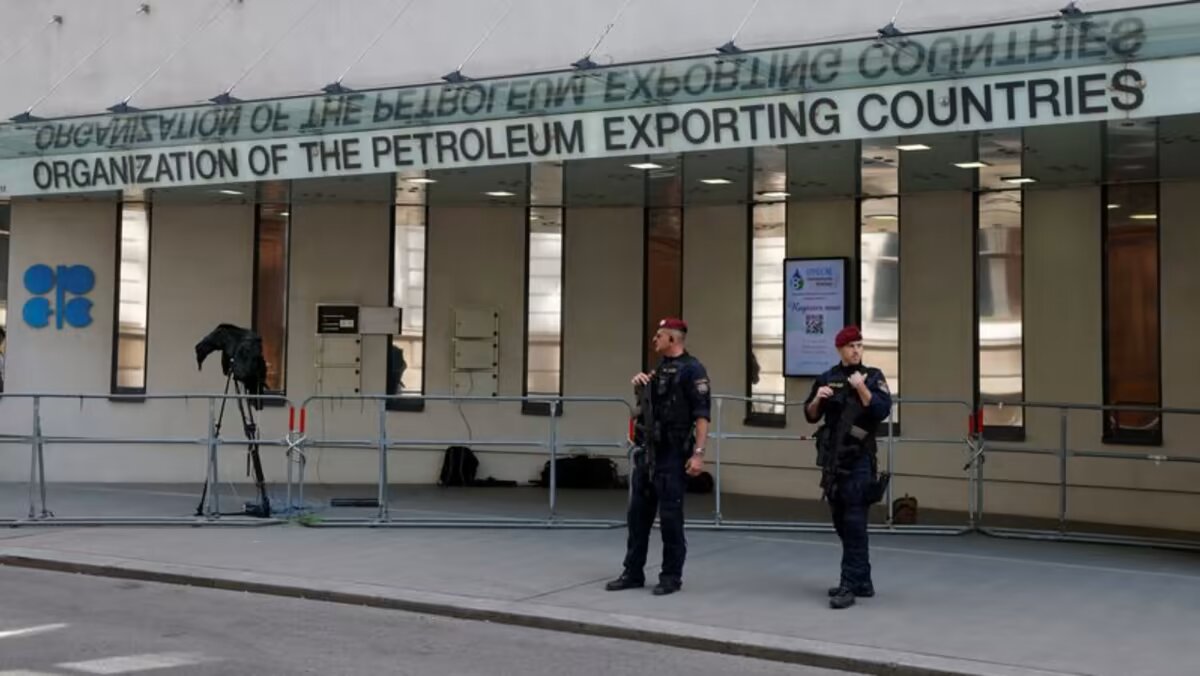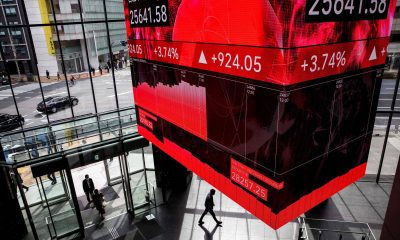Commodities
OPEC+ begins meetings which may agree further output cuts – sources

OPEC and its allies begin two days of meetings on Saturday which may culminate in further production cuts of as much as 1 million barrels per day, OPEC+ sources told Reuters, as the organization faces flagging oil prices and a looming supply glut.
OPEC+, which groups the Organization of the Petroleum Exporting Countries and allies led by Russia, pumps around 40% of the world’s crude, meaning its policy decisions can have a major impact on oil prices.
Three OPEC+ sources told Reuters on Friday cuts were being discussed among options for Sunday’s session, when OPEC+ ministers gather at 2pm (1200 GMT) in Vienna. Before then, OPEC ministers will meet at 11am on Saturday.
The sources said cuts could amount to 1 million bpd on top of existing cuts of 2 million bpd and voluntary cuts of 1.6 million bpd, announced in a surprise move in April and which took effect in May.
If approved, this would take the total volume of reductions to 4.66 million bpd, or around 4.5% of global demand.
“This number is premature, we didn’t go into these things (yet),” Iraq’s oil minister Hayan Abdel-Ghani told reporters on Saturday when asked about a possible cut of 1 million bpd.
Typically production cuts take effect the following month after they are agreed, but ministers could also agree to a later implementation.
Western nations have accused OPEC of manipulating oil prices and undermining the global economy through high energy costs. The West has also accused OPEC of siding too much with Russia despite Western sanctions over Moscow’s invasion of Ukraine.
In response, OPEC officials have said the West’s money-printing over the last decade has driven inflation and forced oil-producing nations to act to maintain the value of their main export.
Asian countries such as China and India have bought the lion’s share of Russian oil exports and refused to join Western sanctions on Russia.
SURPRISE ANNOUNCEMENT
“We look forward to a resolution that will secure sustainability of balance of supply and demand” said UAE’s Energy Minister Suhail Al Mazroui.
Ministers spoke to reporters in their hotels in Vienna. OPEC has denied media access to its headquarters to reporters from Reuters and other news media.
The surprise output announcement in April helped to drive oil prices about $9 per barrel higher to above $87, but they swiftly retreated, under pressure from concerns about global economic growth and demand. On Friday, international benchmark Brent settled at $76. [O/R]
Last week, Saudi Arabia’s Energy Minister Prince Abdulaziz said investors who were shorting the oil price, or betting on a price fall, should “watch out”, which many market watchers interpreted as a warning of additional supply cuts.
Russian Deputy Prime Minister Alexander Novak, however, subsequently said he did not expect any new steps from OPEC+ in Vienna, Russian media reported. Novak, who is on a U.S. sanctions list, is expected in Vienna for Sunday meetings.
The International Energy Agency expects global oil demand to rise further in the second half of 2023, potentially boosting oil prices.
Analysts at JPMorgan (NYSE:JPM), however, said OPEC had not acted quickly enough to adjust supply to record high levels of U.S. output and higher than expected Russian exports.
“There is simply too much supply,” the JPMorgan analysts said in a note, noting extra cuts could amount to around 1 million bpd.
Edward Moya at brokerage OANDA said: “The oil market is doubtful a consensus for another output cut can be reached between the Saudis and Russians, but traders should never underestimate what the Saudis will do and leverage during OPEC+ meetings.»
Commodities
Oil prices rise; U.S. crude inventories plunge, Russia-Ukraine truce eyed
Commodities
India’s Reliance to stop buying Venezuelan oil over US tariffs, sources say
Commodities
Oil prices climb on Venezuela supply worries

 Forex3 years ago
Forex3 years agoForex Today: the dollar is gaining strength amid gloomy sentiment at the start of the Fed’s week

 Forex3 years ago
Forex3 years agoUnbiased review of Pocket Option broker

 Forex3 years ago
Forex3 years agoDollar to pound sterling exchange rate today: Pound plummeted to its lowest since 1985

 Forex3 years ago
Forex3 years agoHow is the Australian dollar doing today?

 Cryptocurrency3 years ago
Cryptocurrency3 years agoWhat happened in the crypto market – current events today

 World3 years ago
World3 years agoWhy are modern video games an art form?

 Commodities3 years ago
Commodities3 years agoCopper continues to fall in price on expectations of lower demand in China

 Economy3 years ago
Economy3 years agoCrude oil tankers double in price due to EU anti-Russian sanctions



































